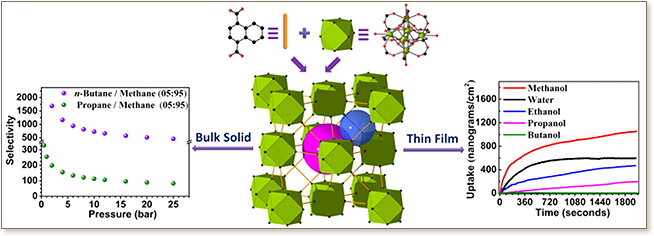

J. Am. Chem. Soc., 137 (15), pp 5034–5040, (2015)

Reticular chemistry approach was successfully employed to deliberately construct new rare-earth (RE, i.e., Eu3+, Tb3+, and Y3+) fcu metal–organic frameworks (MOFs) with restricted window apertures. Controlled and selective access to the resultant contracted fcu-MOF pores permits the achievement of the requisite sorbate cutoff, ideal for selective adsorption kinetics based separation and/or molecular sieving of gases and vapors. Predetermined reaction conditions that permitted the formation in situ of the 12-connected RE hexanuclear molecular building block (MBB) and the establishment of the first RE-fcu-MOF platform, especially in the presence of 2-fluorobenzoic acid (2-FBA) as a modulator and a structure directing agent, were used to synthesize isostructural RE-1,4-NDC-fcu-MOFs based on a relatively bulkier 2-connected bridging ligand, namely 1,4-naphthalenedicarboxylate (1,4-NDC). The subsequent RE-1,4-NDC-fcu-MOF structural features, contracted windows/pores and high concentration of open metal sites combined with exceptional hydrothermal and chemical stabilities, yielded notable gas/solvent separation properties, driven mostly by adsorption kinetics as exemplified in this work for n-butane/methane, butanol/methanol, and butanol/water pair systems.